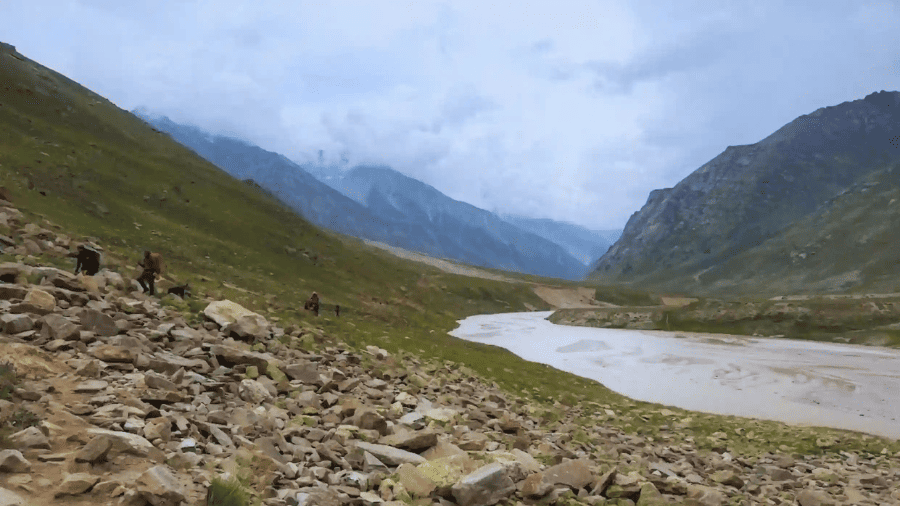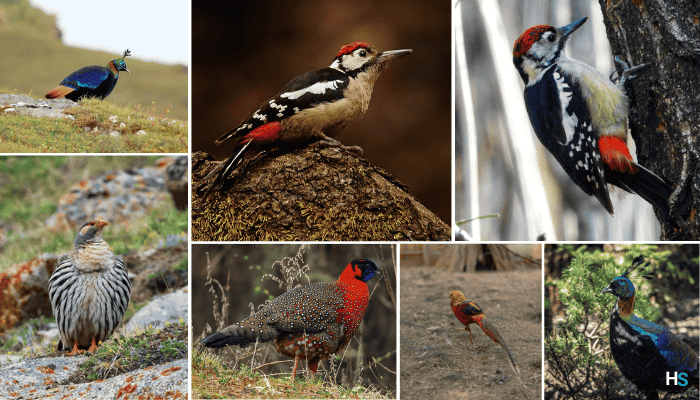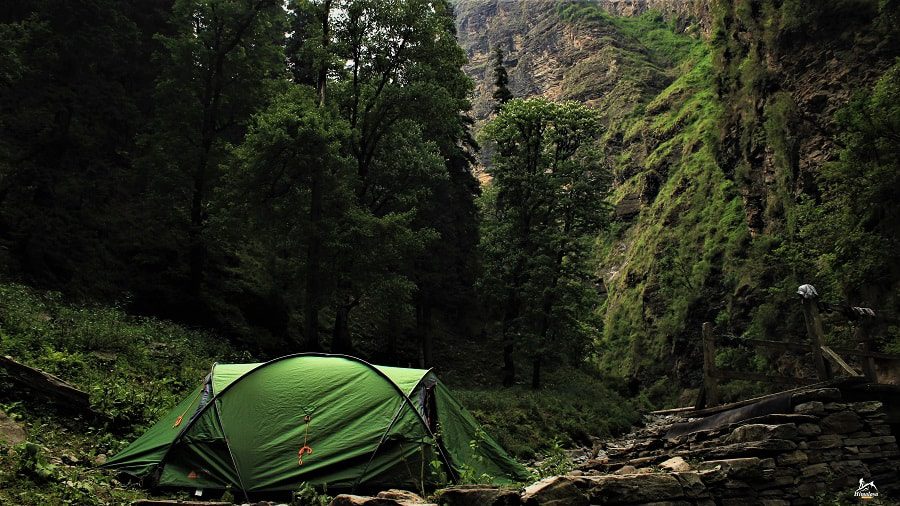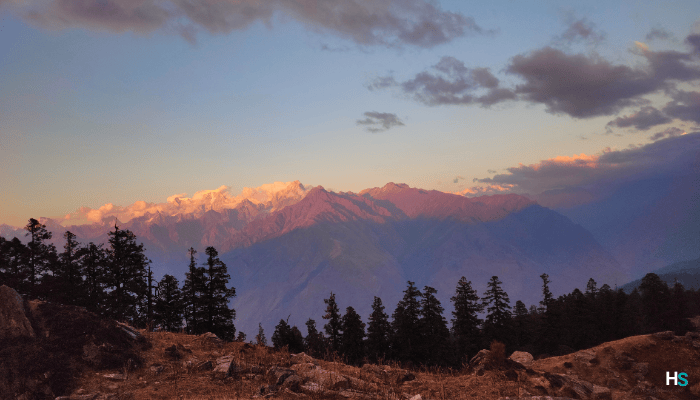
Altitude and Distance of Har ki Doon Trek : Your Guide to Elevation
Uttarakhand is blessed with over 130 trekking destinations and has forever been the trekkers’ hotspot. One of these treks is the one you’ve all heard of – Har Ki Dun Trek or Har Ki Doon Trek. The name suggests a lot about the place. ‘Har’ means God or Shiva and ‘doon’ means Valley, it translates to The Valley of Gods or The Valley where there is the Sound of God. Har ki Doon falls under the Uttarkashi district and hangs from the hills of Garhwal in the shape of a cradle. The altitude and distance of Har ki Doon Trek are truly awe-inspiring, making it an ideal destination for avid seekers and nature enthusiasts.
The Har ki Doon trek is truly promising and scenic. You can only reach there by trekking, which makes it isolated and untouched. Read more

Altitude and Distance of Har Ki Doon Trek-
The Har Ki Doon Trek, with its remarkable altitude and distance, stands as a breathtaking haven for passionate seekers and nature lovers. Har ki Dun Valley is located at an impressive altitude of 3,566 m (11,700 ft) and at a distance of Its awe-inspiring landscape makes it the perfect destination for those yearning for adventure amidst pristine natural beauty.
Har Ki Doon Distance-
The Journey to Har Ki Doon begins with a 190km drive from Dehradun to Sankri. Sankri is where you rest and acclimatize after you have reached.
The morning after, There is a short 12km drive from Sankri to Taluka from where the trek will start. Taluka to Har Ki Doon distance is approximately 22 km. Through the forests of Taluka, you trek 10 km to the secluded campsite at Puani Garat.
Day 3 is another 10kms from the Puani Garat Campsite to Boslo. On this route, you will trek alongside majestic Har Ki Doon Rivers like the Supin and the terraced farms of Osla.
Day 4, is rather longer than the rest of the days as you will not just trek to Har ki Doon and Marinda Tal. But trek, visit, and return to Boslo. The total distance covered would be 15-17 km over the span of approximately 8 hours. You will reach back by early evening and have a restful Har ki Doon night.
From the next morning onwards, you will descend 10 km downwards towards Puani Gati and on Day 6, 10 km to Sankri. Day 7, is again a 190 km drive back to Dehradun and safely home! So the total Har Ki Dun trek length is almost 57km.
Har Ki Doon Elevation and Altitude
The Har Ki Doon altitude is 3,500m. The trek is renowned for its moderate altitude, making it accessible to a wide range of trekkers. The journey begins at Sankri, at an altitude of around 6,400 feet (1,951 meters). This serves as the starting point for the trek and allows trekkers to acclimatize gradually before ascending to the Har Ki Doon altitude.
As the trek progresses, you’ll steadily gain altitude. The highest point on the Har Ki Doon trek is the Kedarkantha base, reaching an elevation of 3,566 meters at the height of Har Ki Doon. The Har Ki Doon height in feet is approximately 11,700. The gradual ascent provides ample time for acclimatization, minimizing AMS-related issues and allowing trekkers to enjoy the breathtaking views fully.
Har ki Doon Elevation:-
Sankri (6,400 feet) to Taluka (7,900 feet)
Taluka (7,900 feet) to Osla (8,556 feet)
Osla (8,556 feet) to Har Ki Dun (11,700 feet)
Best Time to Visit Har Ki Doon Valley-
The best time to visit Har Ki Doon is the summer months of June and May. However, unlike most of the treks, the Har ki Doon trek has its arms open to trekkers most of the year (Seven months). Considering the weather conditions, status of the routes, and all other safety measures, we have curated a short guide on trekking Har ki Doon during different months and what to expect.
Har ki Doon Trek in Spring (March-April):
This is when the gates to the Har ki Doon trek are opened. So, expect slippery routes and cold days. This period is when the snow starts melting and the flora is blooming so you might want to wait till it is in full bloom.
Har ki Doon Trek in Summer (May-June):
The summer is when the ice has melted, flora has bloomed and the sun shines brightly making the weather very pleasant and comfortable. Expect to feel like you are watching the scenic routes on your trek in HD. You can get to experience both warm sunshine days and chilly nights in Har Ki Doon’s best time.
Har ki Doon Trek in Autumn (September-October):
If you are planning a trek to Har Ki Doon in September or October, expect to immerse yourself in a cinnamon sugar fuzzy chilly experience. This time of the year, the window to the cold and rain opens up. Days are much colder and the rain becomes unpredictable. But most of the time, the flora is still in bloom and the sky is cloudy. Difficulty-wise, September is a considerably easier month to trek.
Har ki Doon Trek in Winter (November-December):
The winter months start calling for the snow. Snowfall starts in mid-December and starts freezing. If you are someone who likes winter treks, November is a good time to tick Har Ki Doon off your bucket list. Ensure to pack and plan according to the weather forecast.

Is the Har Ki Doon Trek difficult?
Experienced trekkers rate the Har Ki Doon trek on a moderately difficult level. Well-defined trails, a moderate altitude, and reliable weather make Har Ki Doon a trek that can be done even by children provided they are physically fit.
Is Night Camping allowed in the Har ki Doon Valley?
Recent orders from the Uttarakhand High Court prohibit camping in tents within the Har Ki Dun Valley. So night camping is prohibited within the boundary of the Har ki Doon Valley, even though no one is allowed to camp in the daytime. Please be aware of this restriction while planning your visit to ensure compliance with current regulations and to preserve the ecological integrity of the region.
Hata Valley in Har Ki Doon Trek-
The majestic Hata Valley graces Har Ki Doon, a vast expanse adorned with alpine meadows that offer breathtaking views of the prominent Hata Peak, visible from the Har Ki Doon region. The Hata Peak stands tall at an impressive altitude of 5,820 meters (19,095 feet), serving as a natural boundary between Uttarakhand and Himachal Pradesh. Hata Valley, with its alpine meadows and stunning views of Hata Peak from Har Ki Doon, sits at about 3,810 meters (12,500 feet) to the north, to the right of Marinda Tal. The valley spans around 3 kilometers in one direction.

Marinda Tal in Har Ki Doon Trek-
Marinda Tal is a beautiful high-altitude lake that you can explore when you reach Har Ki Doon Valley. It’s located about 3,800 meters (12,467 feet) above sea level, and you’ll find it surrounded by the stunning Swargarohini peak. During the peak season, the lake is filled with colorful Brahma Kamal flowers, making the views even more captivating. It’s a peaceful spot and a perfect place for photography lovers.
Tips for a Safe & Successful Trek
• Acclimatise properly at each altitude.
• Stay well Hydrated
• Listen to your guide
• Invest in Proper gear
• Don’t carry any extra luggage.
• Start your fitness preparation early!
In conclusion, the Har Ki Doon trek is a must-visit destination for all adventure enthusiasts and nature lovers. Whether you’re a seasoned trekker or a beginner, the Har Ki Dun trek should be on your bucket list. Just make sure to follow the safety tips and guidelines, and you’re good to go. Happy Trekking!
About Author

Himalaya Shelter
Recent news

23 Dec 2025

20 Dec 2025

18 Dec 2025

16 Dec 2025

10 Dec 2025